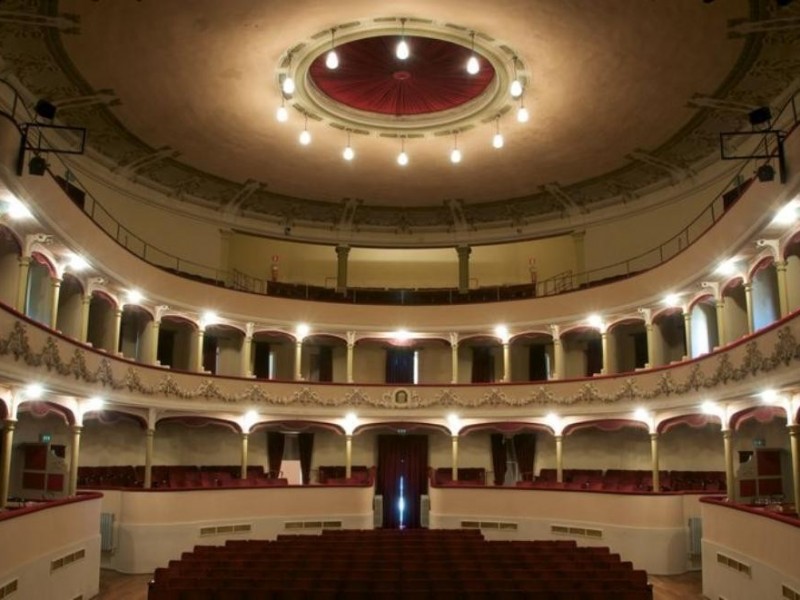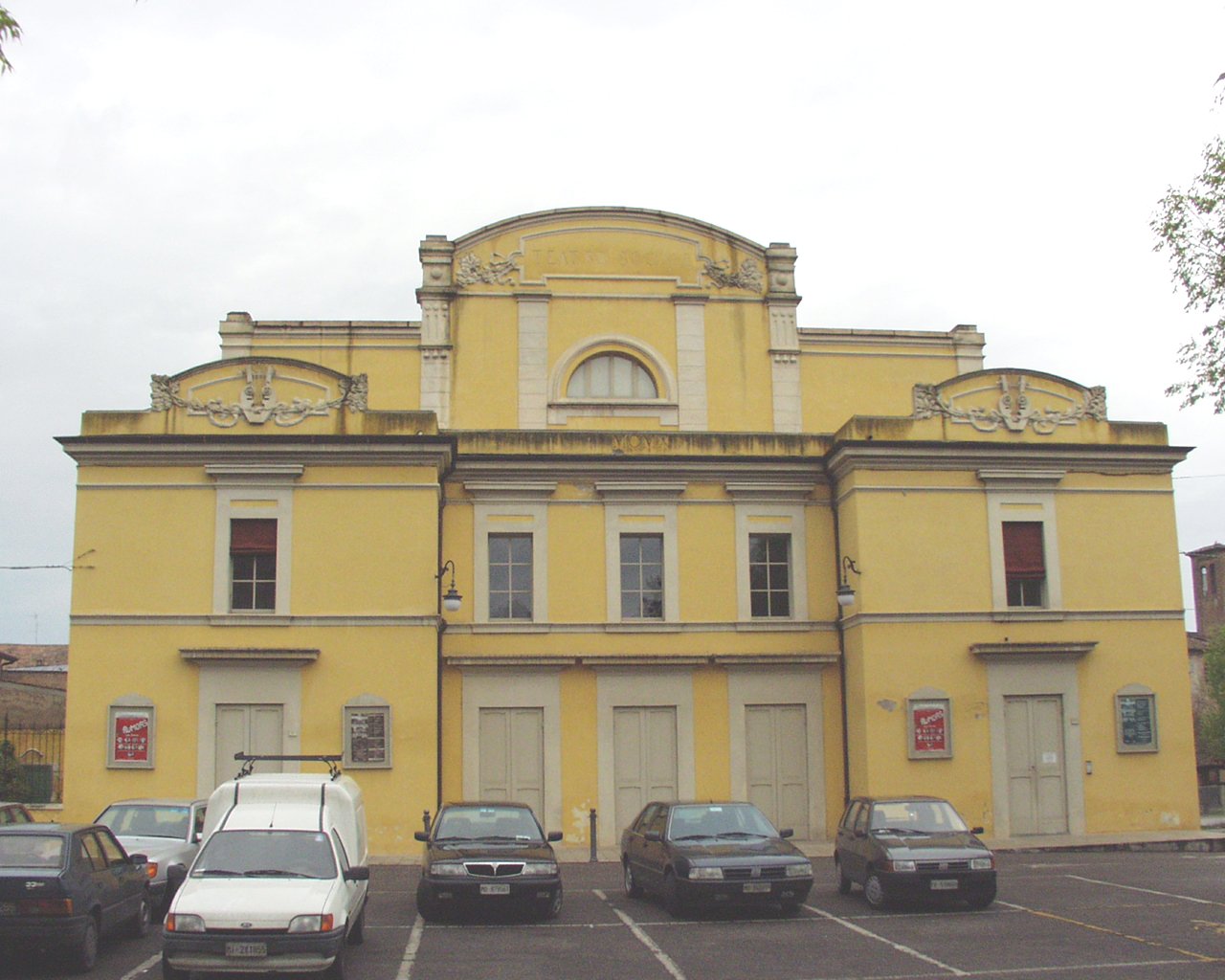Il teatro sociale

La tradizione di Finale Emilia per il teatro è antica. Lo storico Cesare Frassoni nelle sue Memorie fa menzione di un teatro per le pubbliche danze già esistente nel 1567, detto “Balladuro”. Nel 1687 fu costruito nell'’odierno piazzale Roma, accanto alla Rocca, un Teatro Comunale in uno stile inizialmente barocco che poi, in seguito a ristrutturazioni successive, si trasformò in neoclassico. Nel 1899 questo teatro fu abbandonato, per essere definitivamente chiuso nel 1906 (è però ancora individuabile la facciata a nord, sormontata da un frontone triangolare). Nell’ottobre 1905 si costituì una società (composta da ricchi borghesi e famiglie nobili finalesi) per la costruzione di un nuovo teatro. I lavori, iniziati nel 1907, furono portati a termine nel 1910. La facciata è a tre corpi, di cui quello centrale rialzato. All’interno, uno spazioso foyer permette di accedere alla platea e, mediante due scale, ai palchi e alla galleria. L’impianto rappresenta un compromesso progettuale che fonde la tradizione tipologica italiana (in particolare emiliana) del teatro a palchetti con quella francese delle gallerie a balconate continue.
Nelle immagini l'interno e la facciata del Teatro Sociale .

Finale Emilia has a long tradition of theater. In his memoirs, historian Cesare Frassoni mentions a theater for public dances that already existed in 1567, called “Balladuro.” In 1687, a municipal theater was built in what is now Piazzale Roma, next to the Rocca, initially in Baroque style but later transformed into Neoclassical style following successive renovations. In 1899, this theater was abandoned and finally closed in 1906 (however, the north facade, surmounted by a triangular pediment, can still be seen). In October 1905, a company (made up of wealthy bourgeois and noble families from Finale) was formed to build a new theater. Work began in 1907 and was completed in 1910. The facade has three sections, the central one of which is raised. Inside, a spacious foyer provides access to the stalls and, via two staircases, to the boxes and the gallery. The layout represents a design compromise that blends the Italian (particularly Emilian) tradition of boxed theaters with the French tradition of continuous balcony galleries.
The images show the interior and façade of the Teatro Sociale.

